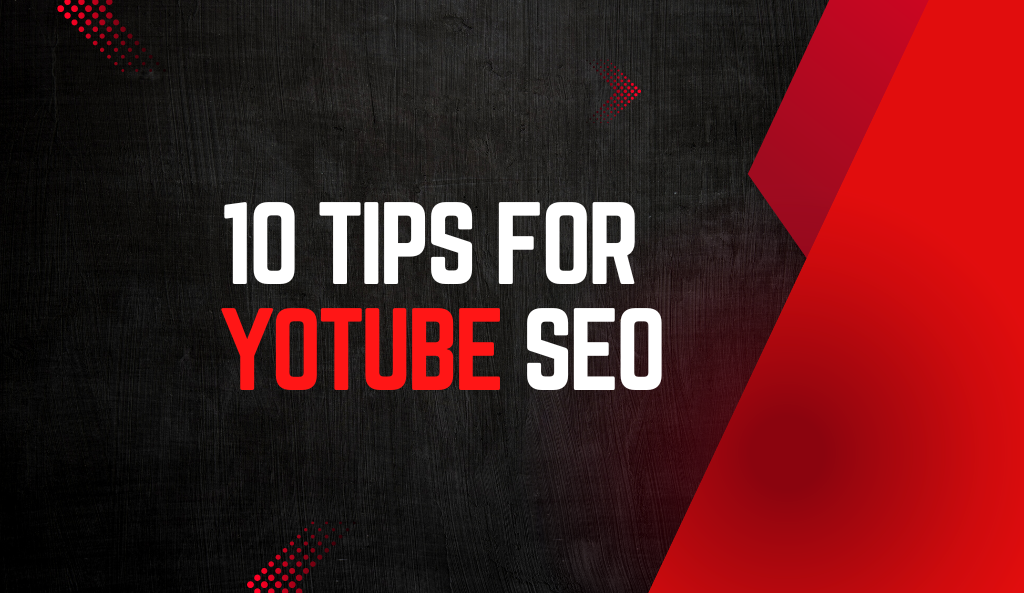If you’re using YouTube to promote your business or brand, then you know how important it is to have your videos show up in search results. But with millions of videos being uploaded to the platform every day, it can be tough to stand out and get noticed. That’s where YouTube SEO comes in. By optimizing your videos for search, you can improve their visibility and reach a wider audience. In this blog post, we’ll be sharing 10 tips for optimizing your YouTube videos for SEO. By following these tips, you can improve your search rankings and drive more traffic to your channel. Let’s get started!
- Do keyword research. Keywords are the words and phrases that people use when searching for content on YouTube. By including relevant keywords in your video titles, descriptions, and tags, you can help your videos show up in search results for those keywords. To find the best keywords for your videos, use a keyword research tool like Google’s Keyword Planner or Ahrefs. Look for keywords with a high search volume and low competition, as these will be the most effective for optimizing your videos.
- Use descriptive and compelling titles. The title of your video is one of the first things that people will see when searching for content on YouTube, so it’s important to make it catchy and descriptive. Use keywords in your titles, but also make sure that they accurately reflect the content of your video. Avoid using clickbait titles or misleading descriptions, as this can lead to a high bounce rate and a negative impact on your search rankings.
- Write a detailed and keyword-rich description. The description of your video is another important factor for YouTube SEO. Use this space to provide a detailed overview of your video and include relevant keywords. You can also use the description to provide links to your website or other relevant resources. Just be sure to keep the description relevant to your video and avoid stuffing it with too many keywords.
- Use tags wisely. YouTube allows you to add tags to your videos, which help the platform understand the content of your video and where it should show up in search results. Use relevant tags, but avoid using too many or using irrelevant tags. You can also use tags to include variations of your primary keywords and to include misspellings of your keywords.
- Optimize your thumbnail. The thumbnail is the small image that appears in search results and on your channel page, and it’s an important factor in whether or not people will click on your video. Make sure to use a clear, high-quality image that accurately represents the content of your video. You can use a tool like Canva to create a custom thumbnail that stands out in search results.
- Use closed captions and transcripts. Closed captions and transcripts can help improve the accessibility of your videos and make them more appealing to a wider audience. They can also help your videos rank better in search results, as they provide additional context and keywords for the platform to index. You can use YouTube’s automatic captioning feature or create your own transcript file to add to your videos.
- Encourage engagement. YouTube values videos that are popular and have high levels of engagement, such as likes, comments, and shares. Encourage your viewers to interact with your videos by asking questions and prompting them to leave comments. You can also use calls to action, such as asking them to subscribe to your channel or follow you on social media.
- Promote your videos. Just because you’ve published a video doesn’t mean that people will automatically see it. To get your videos in front of more people, promote them on your social media channels and other relevant platforms. You can also use YouTube’s paid promotion options, such as TrueView ads, to reach a larger audience.
- Use end screens and annotations. End screens and annotations are small overlays that appear at the end of your videos, and they can be used to promote your other videos, your channel, or external links. Use these features to encourage viewers to watch more of your content and to visit your website or social media channels.
- Monitor and analyze your results. To see how your videos are performing and where you can improve, it’s important to track and measure your results. YouTube provides its own analytics tool, which allows you to see metrics such as views, engagement, and audience retention. You can also use third-party tools like Google Analytics to track the performance of your videos on other platforms and to see how they’re contributing to your overall marketing goals. By regularly analyzing your results, you can identify areas of improvement and optimize your videos for better SEO performance.
In conclusion, optimizing your YouTube videos for SEO can help increase their visibility and drive more traffic to your channel. By following these 10 tips, you can improve your search rankings and reach a wider audience. Remember to do keyword research, use descriptive and compelling titles, write a detailed and keyword-rich description, use tags wisely, optimize your thumbnail, use closed captions and transcripts, encourage engagement, promote your videos, use end screens and annotations, and monitor and analyze your results. With the right approach, you can maximize the impact of your YouTube videos and achieve success on the platform.
